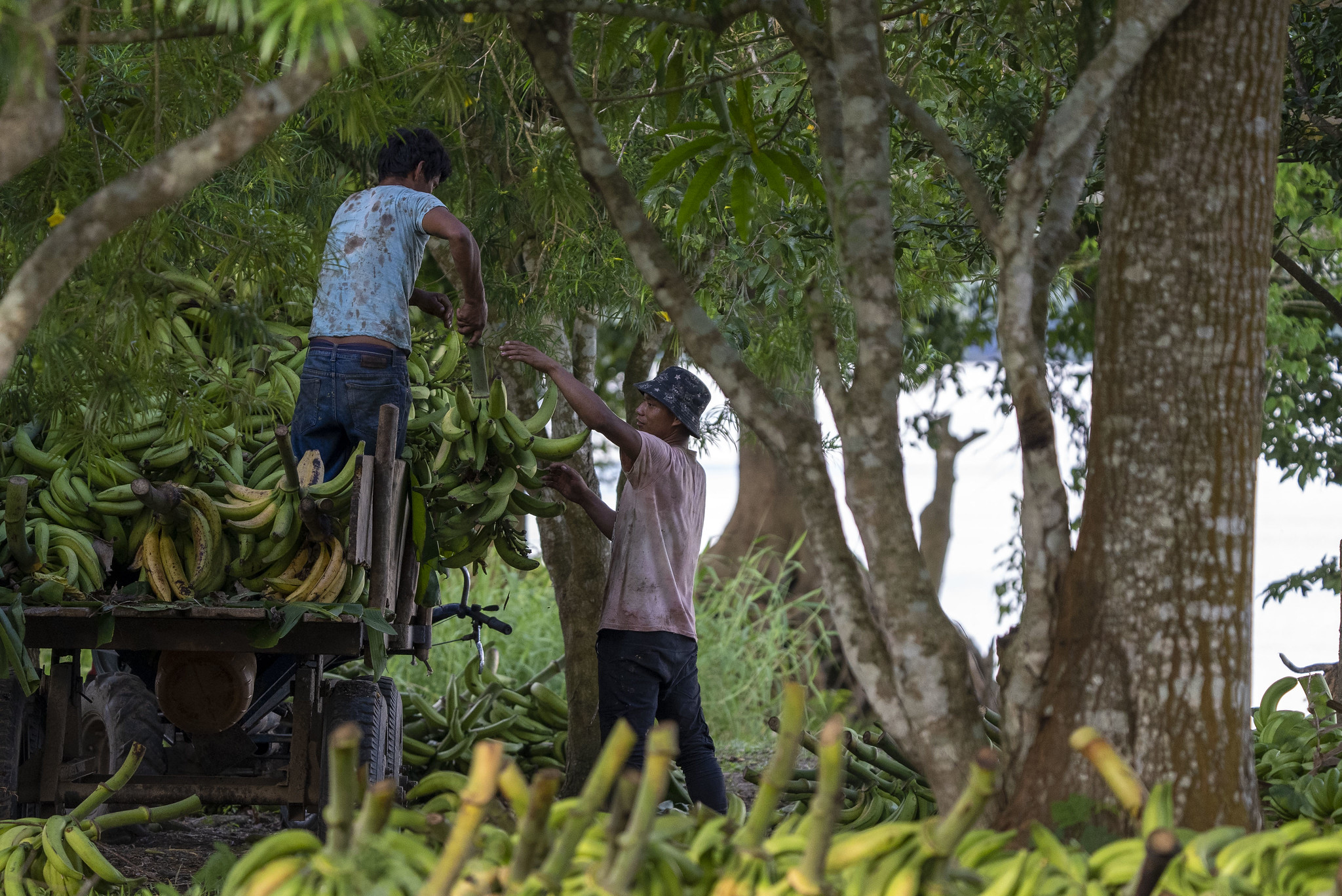Since launching the Climate Strategy nearly a year ago, Administrator Power has made it very clear that USAID is a climate agency. To meet the ambitious targets of the new whole-of-Agency and cross-sector approach, everyone must see themselves as climate champions. The more that USAID succeeds at collaboratively integrating its structures and programming, the more effective the Agency can be at aligning non-environmental programs with climate goals – and fostering more climate champions.
USAID/Peru is taking just such an approach to integration. The Peru Mission has been working to foster a healthy biome for people and nature, particularly in the Amazon Region, which is home to 1.5 million Indigenous people and where about one-third of all plant, animal, and insect species can be found. The Climate Strategy provides an opportunity for all programs that work in the Peruvian Amazon to explore how they can integrate to contribute to biodiversity and climate goals, which are inextricably linked.
In November 2022, Measuring Impact II (MI2) facilitated a Climate, Biodiversity, and Agriculture Retreat on behalf of USAID/Peru. The goal was to increase cross-portfolio dialogue and to use evidence to integrate biodiversity and alternative development work toward improved climate action. We have outlined best practices for cultivating climate champions based on the recent retreat experience.
Whole-of-Agency to Whole-of-Mission
Supportive enabling conditions are key to any change management process. In Peru, the Mission made high-level institutional commitments to implement the USAID Climate Strategy and the Peruvian National Climate Change Policy. Unsustainable development and illegal activities, especially illegal logging, mining, and encroachment on forested lands, lead to biodiversity loss, deforestation, forest degradation, and waterway contamination. USAID/Peru identified integrating biodiversity and alternative development approaches as a key step to contribute to climate targets. The Mission’s alternative development work supports sustainable and licit livelihoods in Amazon communities, contributing to conservation outcomes.
USAID and MI2 worked hand-in-hand to design the retreat with the cross-portfolio dialogue and integration goal in mind. First, we focused on having the right people in the room – bringing together Mission leadership and representatives from multiple divisions and offices, including Alternative Development, Environment, Democracy, Rights and Governance, and Biodiversity. Representatives of USAID/Colombia’s Sustainable Ecosystems and Economic Development Office also attended and shared how they successfully merged their environmental and rural economic development offices to create greater impact.
Finding Common Ground in Complex Systems
It was important for each division to be able to make sense of their role in the complex system of combating climate change. On the first day of the retreat, the MI2 team shared a Situational Model mapping both the Alternative Development and Biodiversity Divisions’ priority interests. The Situational Model depicts both how land conversion and unsustainable agricultural practices contribute to greenhouse gas emissions and how drivers of small-scale illegal activities (eg., illegal gold mining, illegal logging, illegal coca production, land grabbing) contribute to deforestation and biodiversity loss. Participants then updated the Situational Model with feedback, quickly and easily identifying manageable interests and how to connect across portfolios.
We facilitated practical activities so participants could share their views about the theoretical information, relate it to concrete examples of their day-to-day work, and discover how their efforts are already intertwined. For example, agricultural commodities supported by Biodiversity and Alternative Development programs must adhere to the EU Policy on Deforestation-Free Production in order to be sold in European markets. By complying with the policy and demonstrating that their commodities have not contributed to deforestation, Alternative Development programs are already contributing to biodiversity and climate targets.
Scaling Collaboration
Meeting climate and biodiversity goals in the Amazon will require both scaling up successful field-based initiatives and taking a systems-level approach to tackle drivers of deforestation. Jurisdictional approaches can advance integration by bringing together government actors, private sector stakeholders, and local communities to develop and pursue common environmental, social, and economic goals across an administrative district. Through cross-sectoral collaboration, these initiatives can help address risks and drivers of biodiversity loss and deforestation – for instance, by developing more sustainable land-use planning and zoning policies in a jurisdiction. In the Peru retreat, participants used a jurisdictional approach to explicitly link their work to jurisdiction-level outcomes and identify opportunities to collaborate and scale up their work.
USAID Peru’s inaugural Climate, Biodiversity, and Alternative Development Retreat can serve as a model for other Missions seeking to nurture cross-sector and division dialogue and foster champions to advance climate action. By replicating the retreat approach, more Missions and their divisions will see how their work links to Climate Strategy targets, understand colleagues’ challenges and priorities, and collectively raise their ambitions towards climate action.



